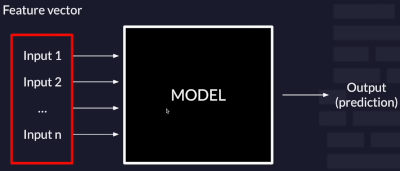Machine Learning Course: Difference between revisions
| Line 5: | Line 5: | ||
=Terms= | =Terms= | ||
They discussed the following | They discussed the following | ||
==Types of Learning== | |||
*Supervised | |||
*Unsupervised | |||
*Reinforcement Learning | |||
'''Supervised Learning''' :This type uses '''labeled data''', where the input and desired output are known, to train a model. The model learns to map inputs to outputs, allowing it to make predictions on new, unseen data. Examples include: | |||
*Classification: Predicting categories (e.g., identifying spam emails). | |||
*Regression: Predicting continuous values (e.g., predicting house prices).<br> | |||
<br> | |||
'''Unsupervised Learning'' :This type works with '''unlabeled data''', where there are no predefined outputs or target variables. The model's goal is to discover patterns, relationships, or structures within the data. Examples include: | |||
*Clustering: Grouping similar data points together (e.g., customer segmentation). | |||
*Dimensionality Reduction: Simplifying data by reducing the number of variables while preserving important information.<br> | |||
<br> | |||
'''Reinforcement Learning''' :This type involves training an agent to learn how to make decisions in an environment to maximize a reward signal. The agent learns through trial and error, receiving rewards or penalties for its actions. Examples include: | |||
*Game Playing: Training an AI to play games like Go or chess. | |||
*Robotics: Controlling robots to perform tasks effectively. | |||
==Types of Data== | ==Types of Data== | ||
*Nominal data | *Nominal data | ||
| Line 17: | Line 32: | ||
<br> | <br> | ||
'''Continuous''' : Continuous data, unlike discrete data, can take on an infinite number of possible values within a given range. It is characterized by being able to assume any value within a specified interval, often including fractional or decimal values. Example Height, Weight<br> | '''Continuous''' : Continuous data, unlike discrete data, can take on an infinite number of possible values within a given range. It is characterized by being able to assume any value within a specified interval, often including fractional or decimal values. Example Height, Weight<br> | ||
==Output Predictions== | |||
For Supervised Learning there is | |||
*classifications | |||
*Regession | |||
Revision as of 23:31, 19 April 2025
Introduction
This is to capture some terms in machine learning course

Terms
They discussed the following
Types of Learning
- Supervised
- Unsupervised
- Reinforcement Learning
Supervised Learning :This type uses labeled data, where the input and desired output are known, to train a model. The model learns to map inputs to outputs, allowing it to make predictions on new, unseen data. Examples include:
- Classification: Predicting categories (e.g., identifying spam emails).
- Regression: Predicting continuous values (e.g., predicting house prices).
'Unsupervised Learning :This type works with unlabeled data, where there are no predefined outputs or target variables. The model's goal is to discover patterns, relationships, or structures within the data. Examples include:
- Clustering: Grouping similar data points together (e.g., customer segmentation).
- Dimensionality Reduction: Simplifying data by reducing the number of variables while preserving important information.
Reinforcement Learning :This type involves training an agent to learn how to make decisions in an environment to maximize a reward signal. The agent learns through trial and error, receiving rewards or penalties for its actions. Examples include:
- Game Playing: Training an AI to play games like Go or chess.
- Robotics: Controlling robots to perform tasks effectively.
Types of Data
- Nominal data
- Ordinal data
- Discrete data
- Continuous data
Nominal Attributes : Nominal attributes, as related to names, refer to categorical data where the values represent different categories or labels without any inherent order or ranking. These attributes are often used to represent names or labels associated with objects, entities, or concepts. Example colours, Sex
Ordinal Attributes : Ordinal attributes are a type of qualitative attribute where the values possess a meaningful order or ranking, but the magnitude between values is not precisely quantified. In other words, while the order of values indicates their relative importance or precedence, the numerical difference between them is not standardized or known. Example grades, payscale
Discrete : Discrete data refer to information that can take on specific, separate values rather than a continuous range. These values are often distinct and separate from one another, and they can be either numerical or categorical in nature. Example Profession, Zip Code
Continuous : Continuous data, unlike discrete data, can take on an infinite number of possible values within a given range. It is characterized by being able to assume any value within a specified interval, often including fractional or decimal values. Example Height, Weight
Output Predictions
For Supervised Learning there is
- classifications
- Regession